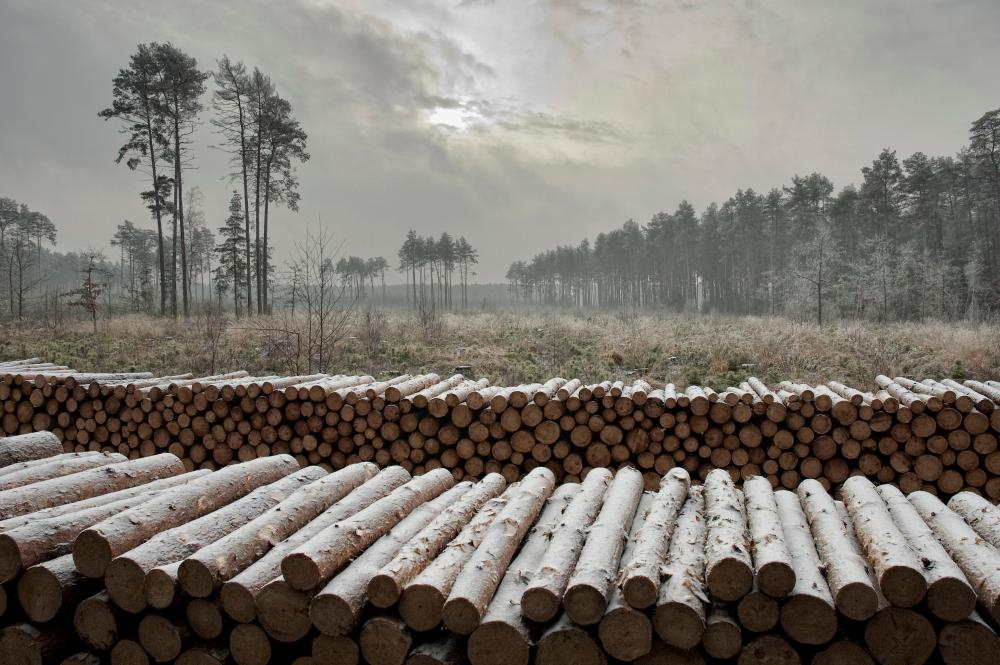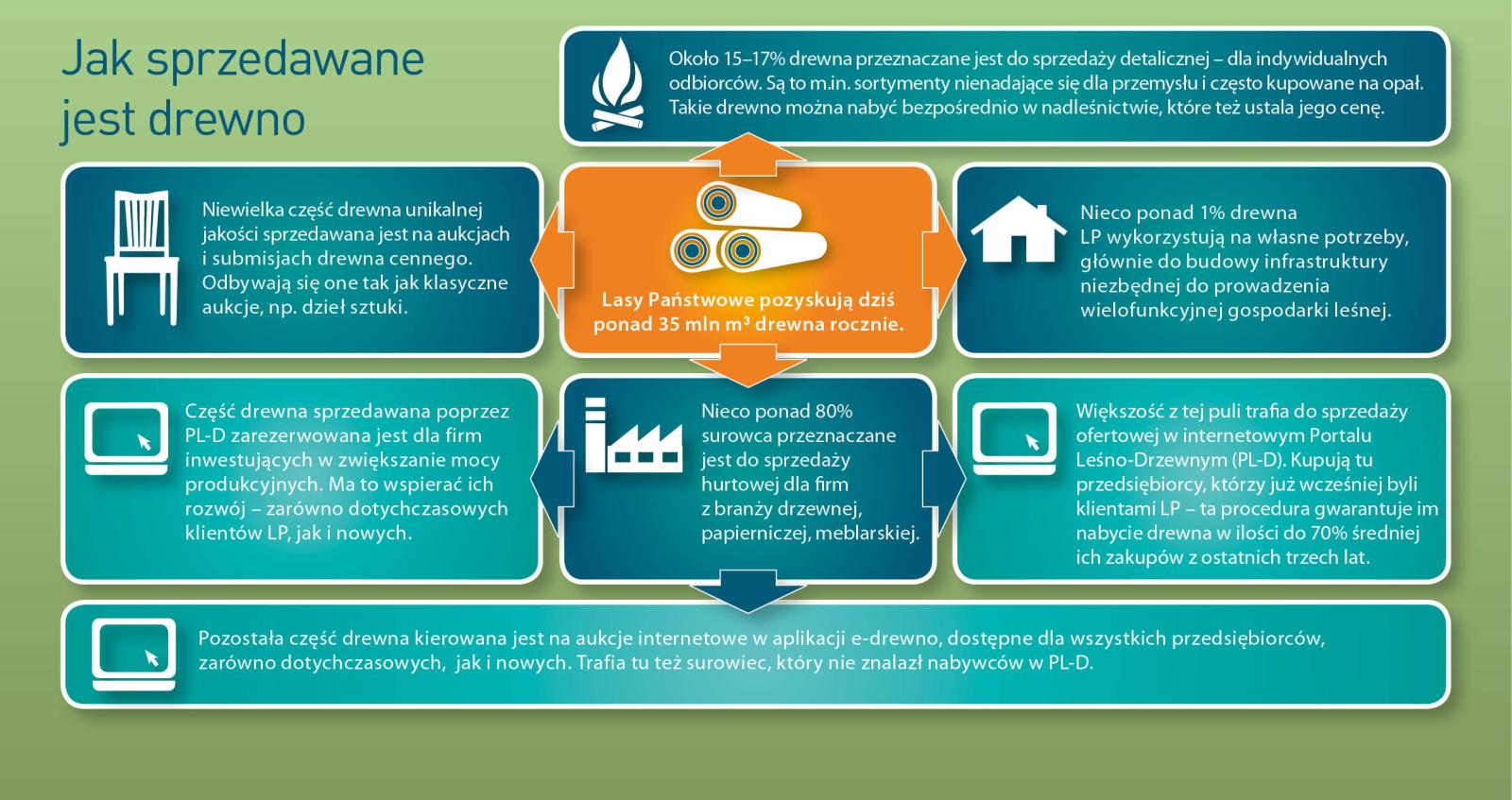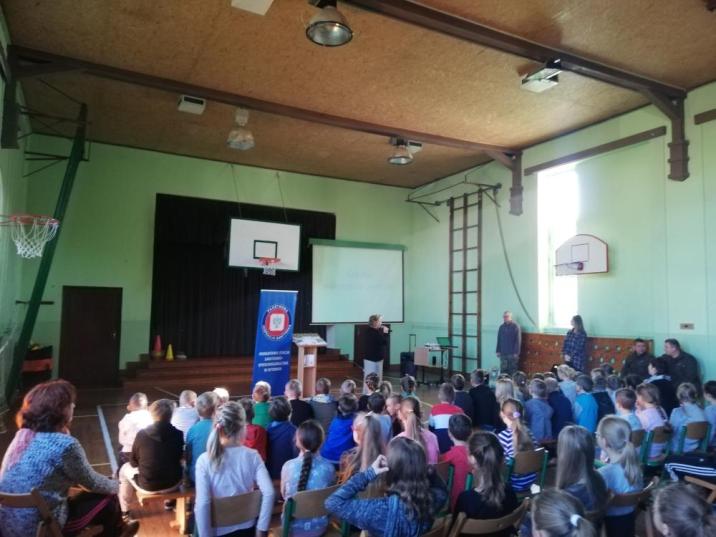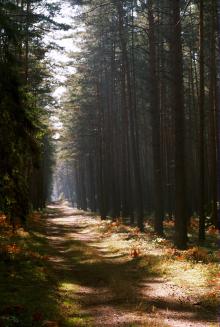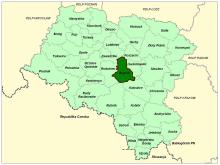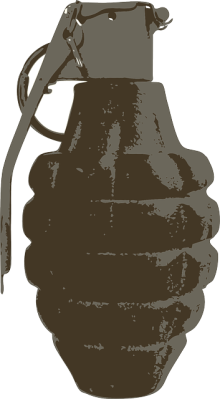Sale conditions
Sale conditions of wood are specified by the regulation of Director – General of the Sate Forests.
Within the framework of the individual sale , the foresters try to meet the fast growing demand, because more and more people use wood in order to heat their houses. Contrary to general opinion, these are not only village people, even though they prevail among recipients. The growth of firewood demand is the result of occurrence of new housing estates built in the suburbs of large agglomerations, where houses are usually equipped in fireplace heating installations.
Firewood is not only the most ecological heat source, but also is much more attractive in respect of relation of price and electric efficiency, rather than cola, oil, gas or electric power.
In recent years, the Sate Forests increased the sale of firewood of one third – up to over 4 million cubic meters annually. Firewood is not only the most ecological heat source, but also is much more attractive in respect of relation of price and electric efficiency, rather than cola, oil, gas or electric power. Some of customers choose already prepared and cut into pieces wood, the others very willingly obtain it by themselves after arranging all details and fulfilling particular safety conditions, and after paying the fee; that concerns mainly so called "thinnings". Such a raw material is very cheap, that is why many people from village areas profit from such possibility.
 Asset Publisher
Asset Publisher
Grzybobranie 2019
Grzybobranie 2019
Jak co roku, gościliśmy u siebie młodych amatorów zbierania grzybów. Siódmego października, po raz kolejny w naszym nadleśnictwie urządziliśmy imprezę o nazwie „Grzybobranie”. Tym razem na nasze zaproszenie odpowiedziało ponad pięćdziesięcioro dzieci ze Szkoły Podstawowej w Tworogu i Szkoły Podstawowej nr 4 z Bytomia, wraz z nauczycielami.
Przed udaniem się do lasu, spotkaliśmy się z uczestnikami w szkole w Tworogu, gdzie wspomogli nas pracownicy SANEPID-u (serdecznie dziękujemy za zaangażowanie i profesjonalizm), którzy w krótkiej prezentacji opowiedzieli o zasadach obowiązujących podczas zbierania grzybów, zwrócili uwagę na możliwe pomyłki w rozpoznawaniu gatunków oraz przy okazji, poruszyli ważny temat związany z zagrożeniami ze strony kleszczy żyjących w lesie.
Po tym spotkaniu grzybiarze pod okiem leśników ruszyli do lasu, gdzie znajdowano podgrzybki, kanie, kurki, rydze i prawdziwki. Finał miał miejsce przy siedzibie nadleśnictwa, gdzie na strudzonych czekał poczęstunek, a najlepsi zbieracze – wyłonieni w wyniku komisyjnego ważenia zebranych grzybów – otrzymali nagrody.
Ponieważ grzybów w tym roku bez liku, nastrój uczestników był radosny, pomimo panującego zimna. Nie możemy się już doczekać kolejnej edycji!


